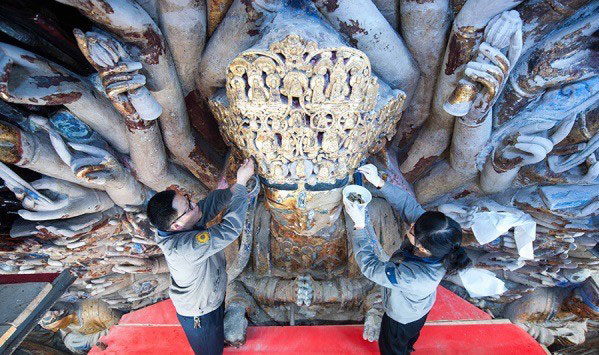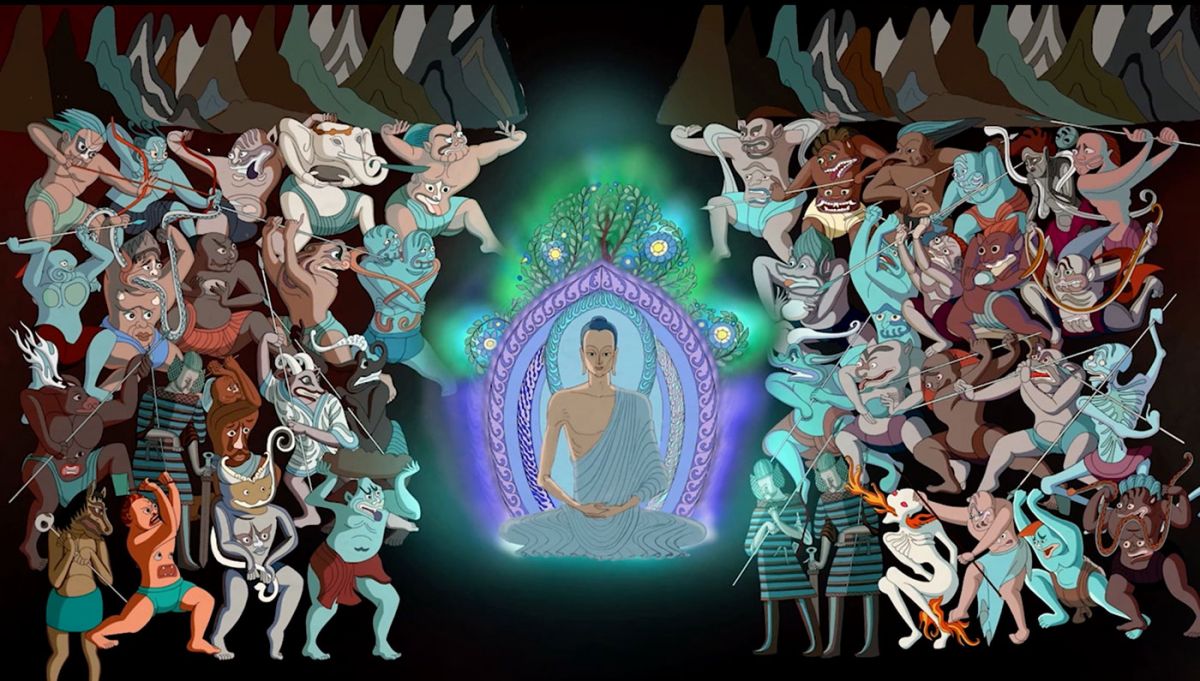Digital heritage, cyber-archiving and education
When discussing heritage conservation, authenticity is the guideline of the process. To maintain the original status of the heritage, paying attention to details and reversibility helps to prevent further damage to the cultural properties when applying materials or methods. Contemporary conservators embrace digital technologies such as photogrammetry, laser scanning, CT (MRI), Inferred and X-Ray scanning in the process. These technologies provide non-intrusive monitoring to collect and share data. The data further helps to analyze the status of the material within and enables the establishment of visualizations and replicas as references. In some cases, replicas further become part of the heritage object after restoration or even replace the original cultural object.
In China, the restoration of the Thousand-Armed Bodhisattva Guanyin, which is part of the Chongqing Dazu Rock Carvings, showcases the usage of 3D printing for heritage conservation. The 3D printed model, made in 1:3 proportion to the original (fig.1), became the reference for the restoration team during the process. Some 3D-printed parts were also blended with the authentic heritage item (fig.2).
Projection mapping, along with restoration, can be further utilized in creating engaging narratives and messages for cultural heritage. yU+co, one of the sponsors of the exhibition of the ‘Cave Temples of Dunhuang’ in 2016, created a projection-based installation at the opening ceremony of the exhibition at the Getty Center in Los Angeles. According to Garson Yu, founder and creative director of yU+co, this projection “gives a more volumetric or immersive experience than regular VR, using a special 360-degree dome shader. It was a year-long process to merge the 2D photographs and merge them into the 3D geometry for the entire cave.” 1 Collaborating with the Getty Conservation Institute on the narrative, yU+co has created a “fluid experience" in the physical environment other than the heritage site. In this case, projection mapping, along with VR, stimulates public interest in and care for cultural restoration. It also reveals the fluidity of digital heritage across cultures, regions, and identities.
Even with the collective devotion, cultural heritage continues to face the threat of human activities ranging from vandalism to theft and wars. Education is key to raising and cultivating the awareness for preservation. With the joint efforts of academia, governmental organizations and industry, the finalized projects can be transformed into education materials. Digital storytelling, computer-aided drawing, and cyber-archiving can be integrated into the STEAM curriculum (Science, Technology, Engineering, Arts, and Mathematics) to help students comprehend the intangible values of heritage (method, techniques, context) and further cherish the existing yet endangered tangible cultural properties.
Good practices of conservation, from cultural objects to architecture and the entire heritage sites, can be further revitalized by digital narrative and storytelling. The latest animation released by the Dunhuang Academy was inspired by the digitized painting in Cave 254 (fig.3). Mr. Chen Haitao and Mrs. Chen Qi, the directors of the animation, integrated the rich imageries of the Buddhist stories of ‘The Great Departure’ and ‘The Attack of Mara’ from the Mogao Cave 254 into animated infographics (fig.4). Their interpretation of the cave painting and artistic recreation has given the piece more profound meanings. The follow-up premiere and workshops at Beijing in late 2016 further revitalized the original painting and contributed to public and higher education.
Wu-Wei Chen is a Visiting Assistant Professor of Arts at NYU Shanghai (wc54@nyu.edu).

